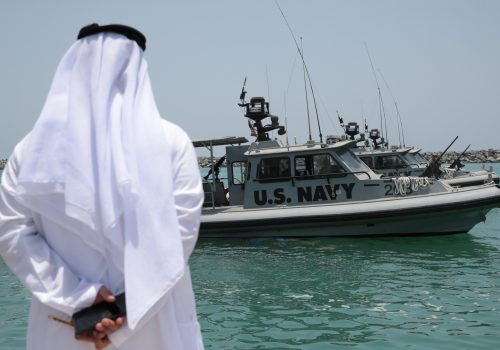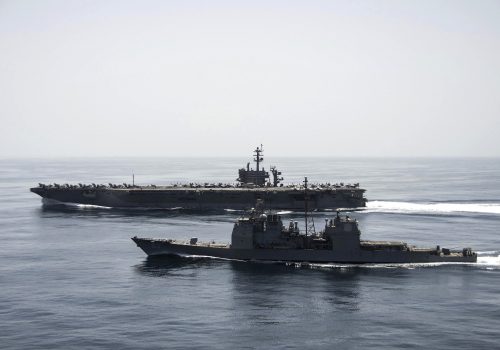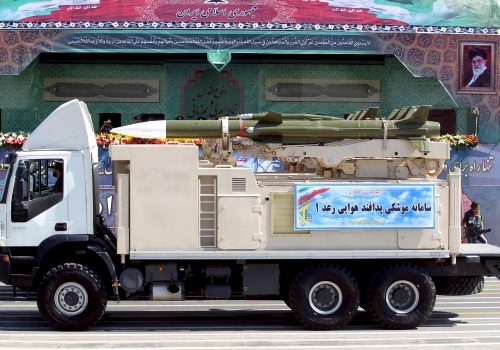American force posture needs to be better aligned to national security interests in an affordable way
The current Senate draft of the 2021 National Defense Authorization Act (NDAA) reflects an understanding that posture and logistics are as important as fifth-generation aircraft, advanced weapons, alliances, and partnerships. The carefully crafted document directs the implementation of the Pacific Deterrence Initiative (PDI), a program designed to ensure that the United States re-establishes military primacy in the Indo-Pacific region. Furthermore, it contains language that expects the US will field a force of optimal size and structure, capable of supporting the conflicts postured in the National Defense Strategy (NDS).
The NDS prioritizes potential conflicts with China, Russia, North Korea, Iran, and terrorist organizations with transnational reach—such as the Islamic State of Iraq and al-Sham (ISIS) and al-Qaeda—and acknowledges the reemergence of Great Power Competition (GPC), the rapid dispersion of technologies, and the need for new warfare concepts that ensure the nation develops forces capable of meeting potential threats, prevailing in combat, and able to preserve the peace. There are a number of challenges associated with the prioritization of GPC with China and Russia over potential conflicts with North Korea, Iran, or transnational terrorist organizations. These include the development of the types and quantities of forces and capabilities needed to engage in GPC, the ability to deploy and support those forces in the locations required to achieve the necessary deterrent effect, and the ability to flex forces in order to counter emerging Chinese and Russian activity. A US force charged only with engaging in GPC would have its hands full. However, doing so while remaining postured to deter or prevail in conflict with North Korea or Iran while simultaneously remaining fully engaged in a global conflict against transnational terrorist organizations is a tall order requiring resourcing, innovation, partnership building, and policies that are currently lacking, despite the NDAA’s ambitious language.
Decisions regarding how a nation postures its forces are, by their very nature, driven by mismatches between available forces and national security policies that define where forces should be arrayed. According to the NDS, “The Department of Defense’s (DOD) enduring mission is to provide combat-credible military forces needed to deter war and protect the security of our nation.” National security policies guide DOD activities that support the mission and impact everything from cutting-edge research and development to the most routine troop deployments. When the number of available forces prove inadequate to allow DOD to meet national security policy requirements, discussions regarding where forces are postured inevitably ensue.
The 2021 draft NDAA prioritizes China and Russia as potential threats and accelerates resources and efforts to achieve the direction provided in the NDS—the recently announced and ill-advised reduction of US troops in Germany notwithstanding. However, despite record levels of defense spending in recent years, the prioritization stresses DOD’s ability to also effectively deter North Korea and Iran and remain fully engaged in deterring and destroying transnational terrorist organizations. The effects of force posture reductions in the Middle East in recent years, likely to be accelerated via the 2021 NDAA, is cause for concern.
The Trump administration’s “maximum pressure” policy on Iran was developed in the wake of the US’s withdrawal from the Joint Comprehensive Plan of Action (JCPOA) and is apparently intended to bring Tehran back to the bargaining table to negotiate a better deal. The campaign combines severe economic sanctions with regional alliance building activity that is tailored to ensure Middle East partners can assist in countering Iranian malign behavior, even as the US reduces military presence in the region to focus on China and Russia.
Both the House and Senate versions of the draft 2021 NDAA have substantial bipartisan support, so prioritization of GPC will assuredly remain an enduring national goal. There is much to consider regarding how the US balances GPC requirements, including the development of highly advanced weapons and capabilities, such as artificial intelligence, hypersonic long-range precision weapons, and unmanned platforms. Advances in every domain, but especially in space, cyber and information warfare, will need to be relentlessly pursued, and success will require either far more resources than are currently being allocated or a revolution in acquisition practices.
Current DOD programs like Ford class aircraft carriers, deep-strike B-21 nuclear bombers, and Columbia class nuclear ballistic missile submarines are all necessary tools for the US to successfully engage in GPC, but the current price—proposed at over $740 billion for 2021—is unsustainable. Additionally, rogue nations like Iran and North Korea and transnational terrorist organizations like ISIS and al-Qaeda can cause the US, its partners, and its allies to reorganize priorities with little notice because the enemy always gets a vote.
It is time to more thoughtfully align national security policy with a force structure and acquisition paradigm that America can afford to the force posture that American security interests require.
John W. Miller is a retired vice admiral in the US Navy who most recently served as commander of the US Fifth Fleet in Bahrain and head of US Naval Forces Central Command (NAVCENT). He is president of the Fozzie Miller Group and a non-resident senior fellow with the Atlantic Council. Follow him on Twitter:@FozzieMiller.
Image: The aircraft carrier USS Nimitz (CVN 68) and the Ticonderoga-class guided-missile cruiser USS Princeton (CG 59) transit the Balabac Strait. Two US Navy aircraft carriers have resumed rare dual exercises in the South China Sea, the second time this month the massive warships have teamed up in the contested waters. The USS Ronald and USS Nimitz carrier strikes groups, comprising more than 12,000 US military personnel among the two aircraft carriers and their escorting cruisers and destroyers, were operating in the South China Sea as of Friday July 17, the US Pacific Fleet said in a statement. The presence of the Nimitz and Reagan in the South China Sea earlier this month marked the first time two US aircraft carriers have operated together there since 2014 and only the second time since 2001.U.S. Navy photo by Mass Communication Specialist 3rd Class Elliot Schaudt via ABACAPRESS.COM


